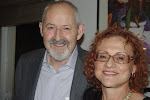There are lots of different aspects of Paris. Although there are centres of special interest, by and
large, where ever one goes there are a huge variety of shops in the majority of
the cities streets. It's like an endless strip shopping centre. Often fashionable shoe shops and designer label clothes
retailers are next to small shops selling wine or books or telephones or
whatever. Bistros, brasseries and patisseries are rarely more than a stones
throw apart.


Kosher is not hard to find.

Coffee is every where, Espresso is 2 Eu but a cappuccino is from 4.5 to 7 Eu!

Some cafes are famous such as three in particular around the Place St.
Germaine where Hemingway and French intellectuals such as Sartre and de
Beauvour met to thrash out there ideas. These are Le Deux Magot, Café Lipp and
Café de Fiore, famous for its red seats and art deco furnishings. For the
modern patron I would think their current popularity depends on their history.
Whilst there coffee and cakes are nice enough their menus are simple and very
ordinary. They are crowded, tables are small and uncomfortable and
prices are high,
though not brutally. This is free enterprise
and the market will bare it. Café Lipp is lit up with large neon signs out side
and has its name emblazoned every where,

on the wall

and on the doormat and the
entry hearth

and also on its crockery and even the wrappers on the chocolates
they offer with coffee.

Their culinary reputation rests on sauerkraut and beer.
They offer a limited lunch menu, coffee and cakes during the day with a range
of wines and Alsatian beers. They extend their small range of cakes with two
from the renowned patisserie Angeline
It
is a lot easier to get these here than at Angeline where the queues can be 100
yards long. On the first occasion we went to Lipp we were shown the door as
they were setting up for dinner and would not serve coffee without food. Subsequently
we returned and tried two of Angelina’s cakes The Montblanc was magnificent,
very rich and sweet the chocolate marron, which had been piped out like strands
of angel hair pasta, rested on a firm sweet cream which all sat on a meringue
base, presented beautifully in a small cup. We’ve not had better ever but you
need to be prepared, it is immensely rich and sweet

The Millefleur however was
not exceptional and we have had better from a local patisserie where we are
staying.

Their décor is peculiar with large mirrors and panels of attractive
floral tiles interspersed with ancient signs with instructions for patrons.
They have metal art deco lamps and the ceiling has some sepia tone scenes.
Above the stairs there is a colourful painting of parrots. Circular stair case
winds down to a very basic toilet.
Café de Fiore, whilst renowned for it’s art deco
furnishings, is simpler and less jarring than Lipp. Their prices are virtually
the same. I liked the lemon tart although for some it would have had too much
lemon. A slice of chocolate tart could not be faulted.
Les Deux Magot was exceptionally crowded with small
round
tables tightly packed so it was
almost impossible to move. Around us patrons were reading travel guides, works
by Jean Cocteau or simply sitting to see and be seen. I’m sure the genuine
French intellectuals and literati have long gone somewhere else.
Food is unexceptional.

Others are fashionable, Les Papilles falls into that group.

The chef works in a tiny open kitchen with his dog and cat wandering around the restaurants taking guests offering.


Where we stayed, in a working class area of the 11
th
Arrondisement, there are fewer fashion shops and more down market restaurants,
Bistrot, Brasseries, and Crepperies and delicatessens of greater variety,
French, Italian, Chinese or mixed Asian dominate. Of the half dozen we have
tried the food has varied from indifferent, for example Shanghai Delices and Lili to reasonable like Rosmarie and Rouge Lime

to excellent at Septime. Many offer set price lunches for about 10 to 13 Euro which equals
about A$14 to A$17.50 which, by law, are advertised on a board on the footpath. Serves are generally substantial.

The evening menus sound most appealing but the cooking is often awful. So much so that, despite appearances, often the best part of the meal is
the bread and sometimes the wine.

Almost raw eggs, very overcooked fish, tough
meat, over strong sauces, everything is available at your local Brasserie.
There are also exceptional places. Among the most famous is Fauchon

Renowned for its patisseries and chocolate they have branched out into luxury foods and have a caviar bar and a Champagne cellar. Coffee, quiches and some delicacies, for example huge Normandy snails can be eaten at some small crowded tables or taken away.
Whatever you want you can find it and, for Australians it's mostly very reasonably priced.



























































